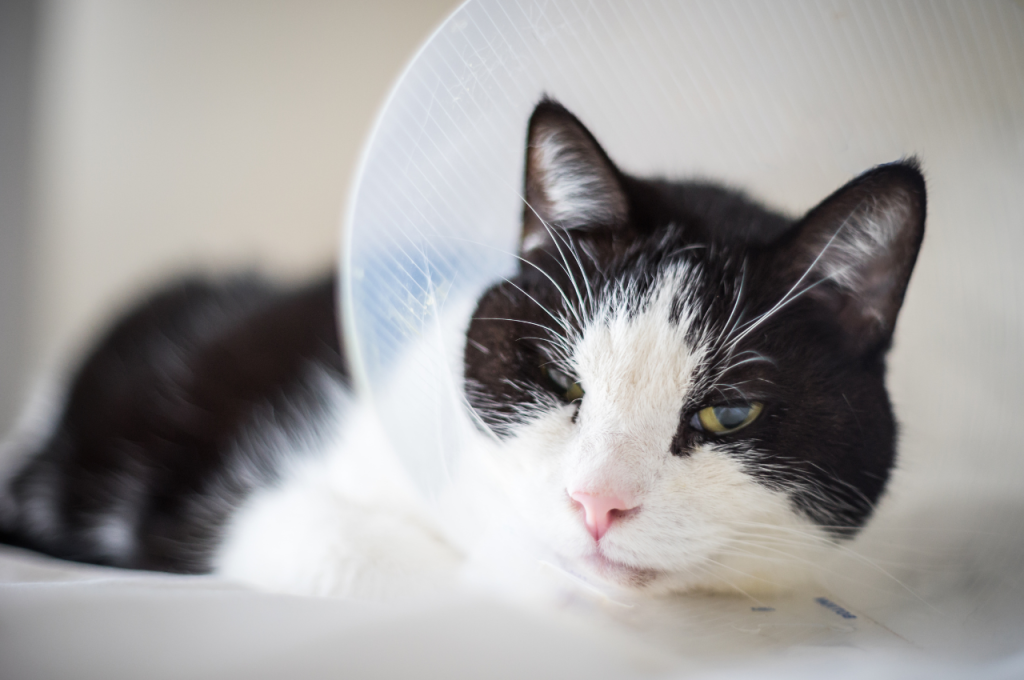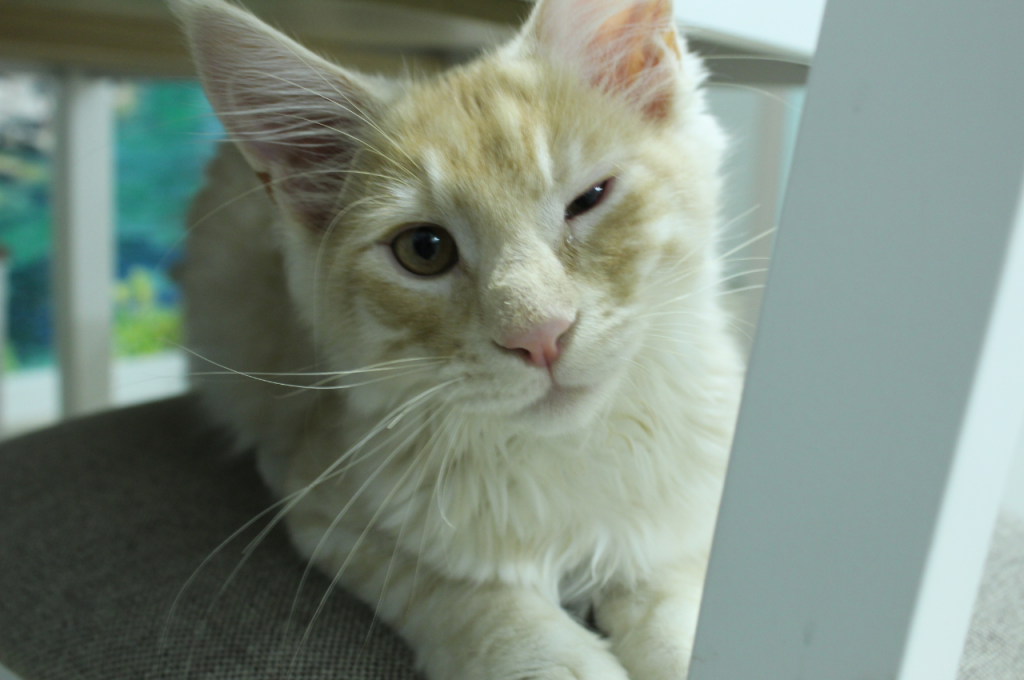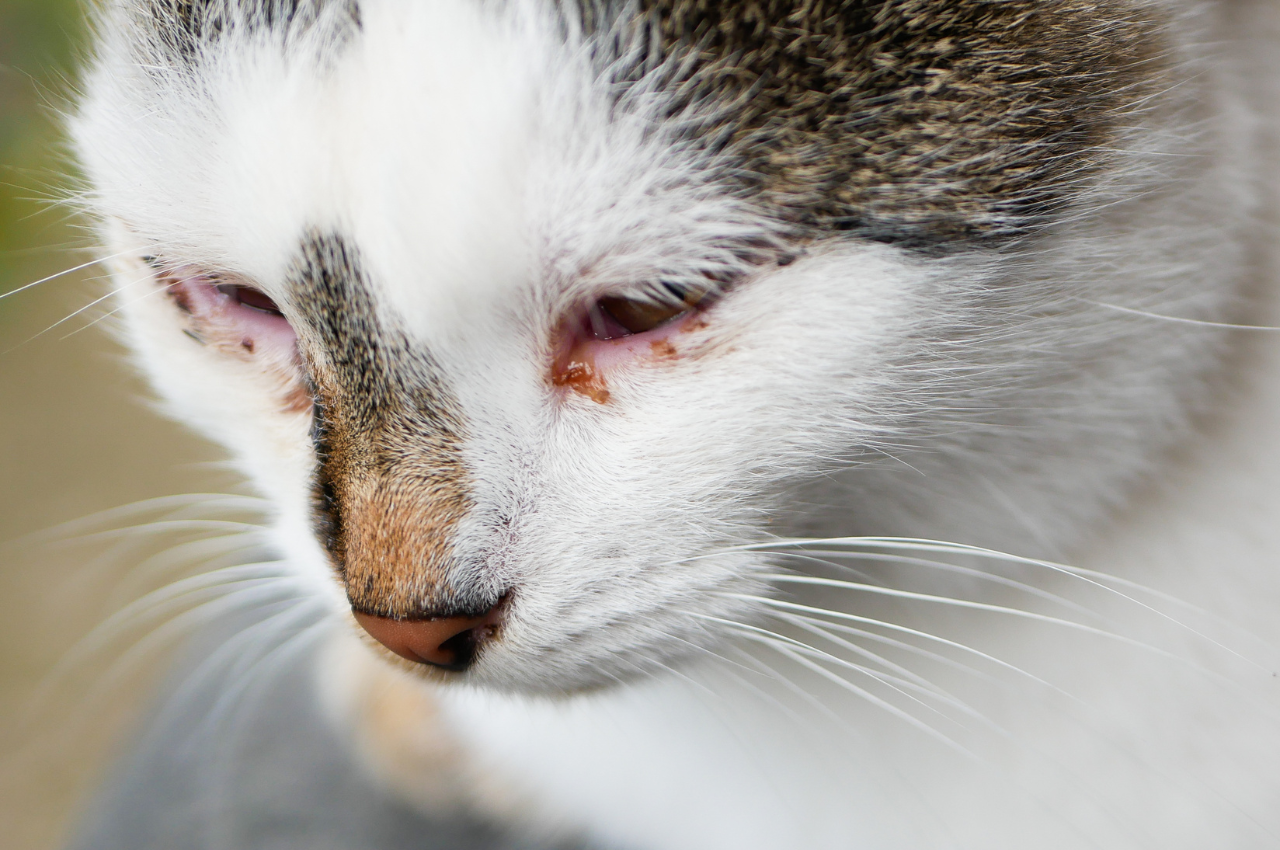The symptoms of a sick cat’s eyes include redness, discharge, swelling, and squinting. These signs indicate possible infections, allergies, injuries, or underlying health issues.
It is important to closely observe your cat’s eyes for any changes in appearance or behavior, as early detection can lead to prompt treatment and better outcomes. Neglecting these symptoms could potentially worsen the condition and cause discomfort or pain for your furry friend. Therefore, regular monitoring and seeking veterinary attention are crucial to ensure the well-being of your cat’s eyes and overall health.
Introduction To Feline Eye Health
Detecting symptoms of a sick cat’s eyes is crucial for feline eye health. Watch for signs like redness, discharge, or cloudiness to ensure prompt veterinary care. Early intervention can prevent serious eye issues and maintain your cat’s overall well-being.

Importance Of Monitoring Cat Eye Symptoms
- Regularly checking your cat’s eyes is crucial for their overall health.
- Early detection of eye issues can prevent serious complications.
Common Eye Issues In Cats
- Cats can experience various eye problems due to infections or injuries.
- Some common issues include conjunctivitis, cataracts, and glaucoma.
Recognizing The Symptoms
Physical Changes In Cat Eyes
When observing your cat’s eyes, be on the lookout for significant physical changes such as discharge, redness, swelling, cloudiness, or a change in the color of the iris. Additionally, unequal pupil sizes, also known as anisocoria, can be indicative of underlying health issues.
Behavioral Indicators Of Eye Problems
In addition to physical changes, pay attention to any behavioral changes that could signal eye problems. If your cat is rubbing or pawing at their eyes, squinting, or showing an aversion to light, it may be a sign of discomfort or pain in the eyes. Excessive tearing or closing one eye frequently can also be a cause for concern.
Physical Symptoms Explored
When it comes to a sick cat’s eyes, observing physical symptoms is crucial for early detection and treatment. Let’s explore the key indicators:
Discharge And Its Variations
Discharge from a cat’s eyes can be a sign of illness. Watery or thick discharge, yellow or green in color, can indicate infection. Excessive tearing may suggest irritation or blocked tear ducts.
Color Changes And Cloudiness
Changes in eye color or the presence of cloudiness could signal underlying health issues. Cloudy eyes can indicate inflammation or cataracts, while unusual color changes may be a sign of infection or injury.
Swelling And Inflammation
Swelling around the eyes or inflammation of the eyelids can be indicators of various conditions, including allergies, infections, or injuries. Redness and puffiness should prompt a thorough examination by a veterinarian.
Behavioral Symptoms Explained
A cat’s eyes can provide valuable insights into its overall health. By observing your feline friend’s behavior, you can detect potential issues with its eyes. Here are some behavioral symptoms to look out for:
Squinting And Winking
If you notice your cat squinting or winking excessively, it could indicate discomfort or pain in the eyes. This behavior may signal the presence of an injury, infection, or irritation.
Pawing At The Eyes
Pawing at the eyes can be a sign of eye discomfort or vision problems. Cats may attempt to alleviate the discomfort by rubbing or pawing at their eyes. This action could worsen the condition, leading to potential injury or infection.
Increased Blinking Frequency
An increased blinking frequency in cats may be a response to eye pain, sensitivity to light, or the presence of foreign objects in the eyes. It’s important to monitor this behavior and seek veterinary attention if the increased blinking persists.
Causes Of Eye Problems In Cats
Cats can experience various eye problems that may indicate underlying health issues. Understanding the causes of eye problems in cats is crucial for timely intervention and treatment.

Infections And Their Impact On Eye Health
- Bacterial and viral infections can lead to eye discharge and redness.
- Conjunctivitis is a common infection that affects a cat’s eyes.
- Untreated infections can result in vision impairment.
Trauma And Its Consequences
- Scratches or injuries to the eye can cause pain and inflammation.
- Foreign objects can damage the eye and lead to infections.
- Severe trauma may require immediate veterinary attention.
Underlying Health Conditions
- Systemic diseases like diabetes can impact a cat’s eye health.
- Hypertension can manifest through eye changes in cats.
- Regular check-ups can help detect underlying health issues early.
When To Visit The Vet
When it comes to our feline friends, it can be difficult to tell when something is wrong. Cats are notorious for hiding their illnesses, and it’s up to us as pet owners to keep a watchful eye on their health. One area to pay attention to is their eyes.
Assessing The Severity Of Symptoms
The severity of your cat’s eye symptoms can vary greatly, ranging from mild irritation to a serious condition that could lead to blindness. Here are some common symptoms to look out for:
| Symptom | Description |
| Discharge | Excessive tearing or discharge that is thick, yellow, or green in color. |
| Redness or Swelling | The whites of the eyes may appear red or swollen, or the eyelids may be swollen and itchy. |
| Cloudiness | The eye may appear cloudy or hazy, or your cat may have trouble seeing. |
| Squinting or Blinking | Your cat may squint or blink frequently, or appear to be in discomfort when opening their eyes. |
If your cat is experiencing any of these symptoms, it’s important to assess the severity of the issue before deciding whether to visit the vet. Mild symptoms such as occasional tearing or redness may not require immediate attention, but more severe symptoms such as cloudiness or excessive discharge should be addressed as soon as possible.
Preparing For A Veterinary Visit
If you’ve determined that a visit to the vet is necessary, there are a few things you can do to prepare:
- Make note of your cat’s symptoms and when they started
- Bring any medications or supplements your cat is currently taking
- Be prepared to answer questions about your cat’s diet, behavior, and overall health
- Consider bringing a list of questions to ask your vet
By being prepared and informed, you can help ensure that your cat receives the best possible care.
Diagnosis And Treatment Options
Detecting symptoms of a sick cat’s eyes is crucial for timely diagnosis and treatment. Look out for signs such as excessive tearing, redness, cloudiness, or squinting, which may indicate underlying health issues. Consulting a veterinarian promptly can help identify and address the problem, ensuring your cat’s eye health and overall well-being.
Treatment Modalities For Cat Eye Issues
Diagnosis and treatment options for cat eye issues involve common diagnostic tests to identify the problem and various treatment modalities to address the specific condition.
The Prognosis For Cats With Eye Symptoms
Cats with eye symptoms may display signs such as redness, discharge, squinting, or cloudiness in the eye. These symptoms could indicate a range of conditions, from infections to glaucoma. Prompt veterinary care is crucial for a proper diagnosis and to improve the prognosis for the cat’s eye health.

Monitoring And Managing Eye Health
Cats can suffer from a variety of eye problems, ranging from minor infections to more serious conditions like glaucoma and cataracts. As a cat owner, it is important to keep an eye on your cat’s ocular health and seek veterinary care if you notice any changes in their eyes. Regular check-ups with your veterinarian can help catch any issues early on and prevent them from progressing. Some common signs of eye problems in cats include excessive tearing or discharge, redness or swelling of the eye or surrounding tissues, cloudiness or opacity of the eye, and changes in pupil size or shape. If you notice any of these symptoms, it is important to have your cat evaluated by a veterinarian as soon as possible.
Supporting Your Cat Through Recovery
The prognosis for cats with eye symptoms depends on the underlying cause of the problem. Minor infections or injuries may be easily treated with topical medications or antibiotics, while more serious conditions may require surgery or ongoing management. As a cat owner, you can help support your cat through their recovery by following your veterinarian’s treatment plan and providing a safe, comfortable environment for them to rest and heal. This may include administering medications, cleaning and caring for the affected eye, and monitoring your cat’s progress closely.
In some cases, dietary changes or supplements may also be recommended to help support your cat’s overall health and immune system. Be sure to discuss any concerns or questions with your veterinarian and follow their recommendations closely to ensure the best possible outcome for your furry friend. In conclusion, keeping a close eye on your cat’s ocular health and seeking veterinary care when necessary can help prevent and manage eye problems in cats. With proper monitoring, management, and support, cats with eye symptoms can recover and enjoy a healthy, happy life.
Conclusion
It’s vital for cat owners to keep a close eye on their feline’s eyes. The most common symptoms of a sick cat’s eyes include redness, discharge, cloudiness, and squinting. If you notice any of these signs, it’s important to take your cat to the vet immediately for a proper diagnosis and treatment.
By being vigilant and proactive in caring for your cat’s eyes, you can help keep your furry friend healthy and happy for years to come.
